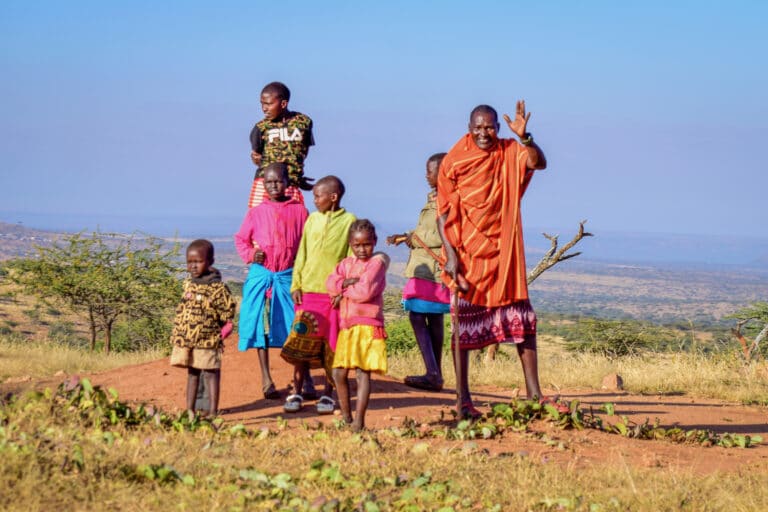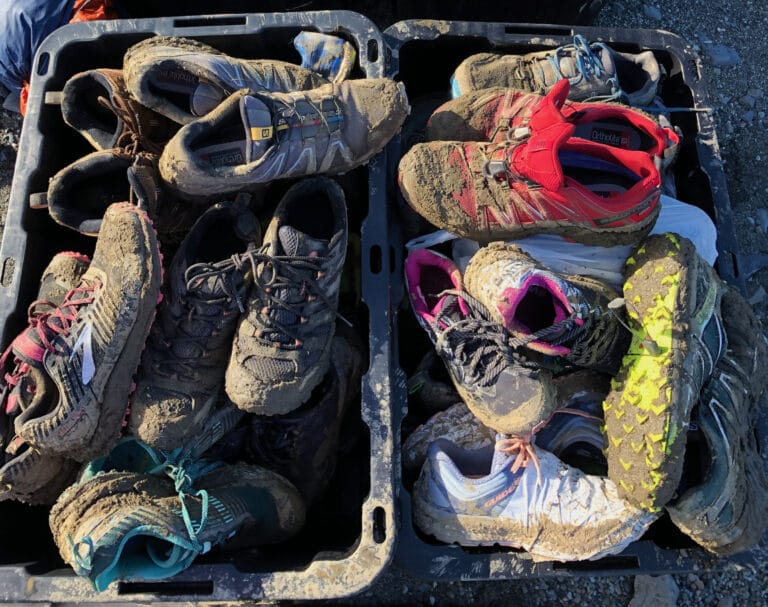#7 leadership lesson has to do with handling the unexpected!
As I reflect on an entire year not physically racing with other runners, I realize how much I miss these fun events. Virtual runs have been an interesting alternative. Yet, they don’t compare when it comes to sharing life experiences, building unforgettable memories, and actually strengthening your leadership.
I admit I have run more than the average person. But I can tell I built my most critical leadership skills while preparing and participating in these running races.
Some might sound obvious to you, like the importance of preparation or grit and ability to face adversity. Other ones might surprise you.
The bottom line is that you build your most critical leadership skills outside of work.
After running marathons on the seven continents, I learned to practice a few of these leadership lessons. Here are the top seven:
#1-5 - Vision, discipline and agility boost motivation

I successfully trained for more than thirty full marathons. All while being in high-stress leadership jobs, with ever-changing conditions and constant world travel. How did I keep my motivation, manage the complexity, and avoid the constant distractions?
The short answer is deceptively simple: discipline, focus, and the ability to divide any major undertaking into chewable chunks. As importantly, I applied the same principles to my business activities and my marathon training.
1. Credibly establish your vision. In both business and racing, you want to set an ambitious yet realistic goal based on your available capabilities and expertise.
2. Build a plan you can stick to. Successful marathon racers choose the right training strategy. They include hills, speed, or long-run variety into it and rarely miss a session. Like them, formalize your plan, build diversity into it, and religiously mark your calendar to start executing on it.
3. Continuously monitor how you’re doing against your goals. Runners look at how their Vo2 Max is evolving and how rested they feel. As a business leader, find meaningful metrics that truly track success and review them continuously.
4. Adjust when needed. If your performance goes down or if you face an injury, you need to change course. The same goes for business. The best plans are the ones you can adapt to changing circumstances.
5. Keep things in perspective. Success comes to runners when they watch for nutrition, sleep quality, and proper cross-training. Like them, business leaders have a complete ecosystem of goals and initiatives that need to be aligned.
#6 - When you're lost, ask for help!

It was a cool morning in the heart of the Maasai territory in Kenya. Elevation was around 6,000 ft. We were ready for an epic race through the hills, canyons, and river beds. The itinerary markings were rudimentary, with orange chalk on random stones through the path.
Around mile 24, I was on my way to be the first non-local runner to finish. As I feared, crucifying cramps were impacting my legs. Lost in my thoughts, I found it harder to focus on the path. I soon checked for the orange marks. They were gone!
I checked again and couldn’t see any orange stone around. I ran back a few hundreds of yards, but still, no sign on the horizon. After going back and forth a few more times, I had to admit it: I was lost!
I noticed a hut in the distance. I ran there, hoping I’d find someone who would show me the way. Children were playing outside the place. I tried my luck with them, but none would speak English.
Suddenly, a giant Maasai man surged from inside the hut. I only said two words: “Finish line?”. He didn’t say anything but started running barefoot among the forest of acacia trees. I followed him, and after half a mile, I was back on the right path.
Eventually, I crossed the finish line. I was late but ended up finishing thanks to that massive help from my new Maasai friend.
The lesson is an obvious one. But we often fail to realize it in business before it’s too late.
So, the next time you and your team are losing sight of your destination, swallow your pride and ask for help. It will save you from much trouble.
#7 - Get ready for the unexpected

When you prepare for the Antarctica Marathon, you focus your training on adapting to cold environments with extreme and sudden changes in conditions. It wasn’t easy for me, with the mild Californian winters, but I got as ready as could be.
After an epic couple of tumultuous days in the Drake passage from Argentina, we eventually hit Antarctica. Given the limitations, less than 100 visitors could be on land at the same time. The Vavilov and Ioffe expedition boats were following each other by a day. We were on the Ioffe.
The Vavilov team went first for the Marathon: temperatures in the ’20s (Fahrenheit), gusty winds, hail, snow. These were pretty typical conditions, and several runners suffered from hypothermia. Some even were not able to finish.
I woke up the following day on the Ioffe expedition boat, mentally prepared for a tough day. I was pleasantly surprised to see the sunny skies and calm seas. The ice on the ground was probably the only sign it had been quite cold that night.
The course was a four-loop path (you don’t do point-to-point in Antarctica if you want your runners to finish alive!). The weather proved to be remarkably mild and bearable in the ’30s. But, after a couple of loops, I noted the deterioration of the road conditions as the ice started to melt.
I would have never expected it under these latitudes: we were glued into fields of thick mud. One of my shoes even entirely disappeared in the sucking brown mass. It took all of us longer to finish. Yet, we invented new ways of running on our heels and even took an extended cut to avoid the deepest mud areas altogether.
Bad stuff tends to come in the most unexpected ways. No matter how great your planning is, you need to build agility in your execution to prevail. Creative thinking and improvisation do best when coupled with solid planning.
Your biggest personal challenges will help you succeed in business
It doesn’t matter whether you set your sights on extreme sports around the globe or want to lose your next 10 pounds. The moral is that how you approach your personal challenges teaches you a lot about great leadership. And you can apply these lessons to become a more decisive leader at work.
As a recap, I shaped my leadership philosophy with these seven lessons:
- Credibly establish your vision.
- Build a plan you can stick to.
- Continuously monitor how you’re doing
- Adjust as you go when needed.
- Keep things in perspective.
- Ask for help when you’re lost.
- Get ready for the unexpected.
What about you? What have you learned from your personal challenges that made you a better leader at work?
Keep digging, and if you come to a point where you feel stuck, reach out to me at tanguy@theproductsherpa.com. Let the Sherpa be your guide.
